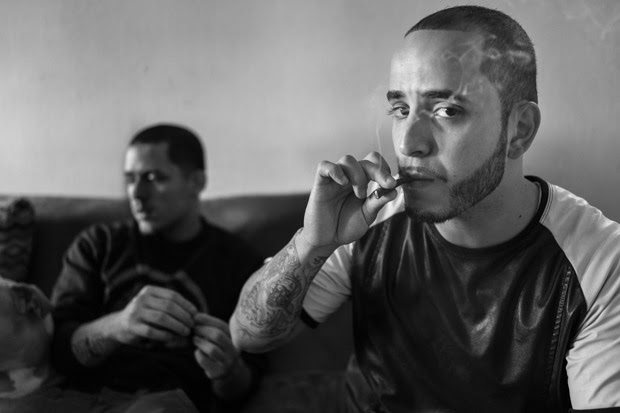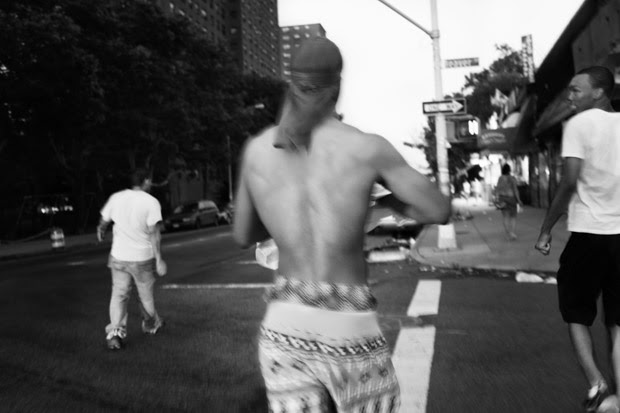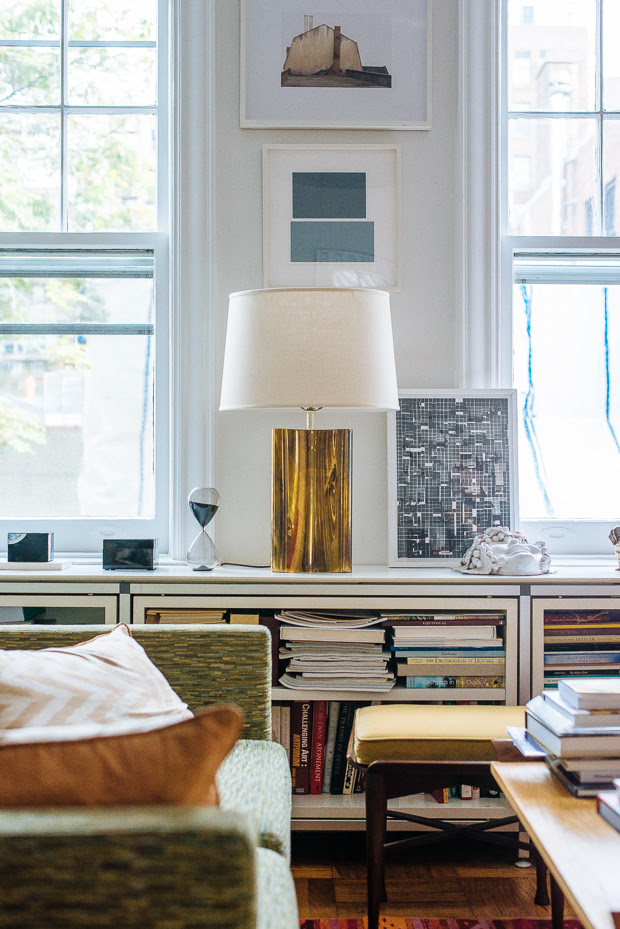Feature Shoot |
|
Posted: 28 Oct 2015 07:00 AM PDT
 Smokey, leader of the southside Latin Kings gang in Brooklyn, poses for a photo while drinking a beer inside one of the housing projects in Brooklyn.  “From here I can shoot the J train” is what “B-Rad” said to his brother in law “Smokey.” B-Rad is not a Latin King; he is a member of the “Ysquad” Gang that rules a small neighborhood in Brooklyn. When photographer Nicolas Enriquez moved from his hometown in Colombia to study photojournalism in New York, he was inspired to start a documentary series exploring gang culture in the USA. His series The Bloodline offers a rare glimpse into the day-to-day lives of the Latin Kings, one of America’s largest and most organized gangs with an estimated 35,000 active members. The title of his project – The Bloodline – is taken from the name designated by the Latin Kings to the New York faction of their gang. In our society, the word ‘gang’ holds no positive connotations. Enriquez attempts to understand their lifestyle through the lens and probe deeper beyond the stereotypes. By spending time with them, he found that beneath their aggressive veneer, these gang members were actually very lonely individuals, and even within their groups, he could sense the solitude and sadness of these young people. In gaining the trust of the gang members, Enriquez was granted full access into their lives, and his series is an intimate and insightful portrait of gang life. His images reveal the hostility of their environment, the incendiary heat of the violence, the paranoia, and the permanent state of unease that they can only fully escape from in marijuana.  What was the inspiration behind this project? “Most of the inspiration for me to start this project came from one of my teachers while I was a student at ICP. His name is Joseph Rodriguez, and he has a wide body of work documenting gangs in L.A. I’ve always been a big fan of his work, and I’m very inspired by his approach. It was he that encouraged me and pushed me to keep going with the project, and he offered advice several times during the process of getting access to photograph the gang.” How did you gain the trust of your subjects before photographing them? “I started a project called people living in their neighborhoods, which in fact was just a cover for me to hang out around housing projects, approach people and interact with them. For me it was a way of testing the water and familiarizing myself with the environment and the people who lived in it. After photographing more than a hundred portraits and conducting short interviews with these people, I started to form an opinion of who might or might not be related with a gang. I kept in touch with those whom I suspected to be part of a gang and started calling them and trying to hang out with them. At the time I was only 20 years old, so there was not much I could do while hanging out, besides inviting them to eat or drink coffee at a grocery store, and that helped me because it strengthened their trust in me. I was not looking to be part of the gang; I was just curious and wanted to learn more about not only the gangs but their own personal lives, and they felt this curiosity and opened to it.”  Demetrius smokes a joint of marijuana at his apartment in Brooklyn. Demetrius was released from jail one month ago after spending three years incarcerated.  What difficulties did you encounter while shooting, if any? “Technically, the lack of light. Sometimes this produced an interesting shot, but in a life full of sudden actions, it was hard to capture a precise moment. On the personal side, it was hard for me to understand their position and their decision – for instance, why would you become a gang member? Very few people respect you; you’re constantly on the police radar and regularly enter conflict with other gangs… But also would you choose this lifestyle? Little by little I started to put my judgements of these people aside, and I saw them for who they really were – the more human side. This didn’t change my opinion on their actions, but it did give me a reason and something to point at.”  What image do you hope to portray of the Latin Kings in your series? “I got to the point where I started seeing the gang members as kids in a boy’s club – having fun, being boys and playing around, supporting each other – there was a lot of camaraderie and I enjoyed it and photographed them like that for a long time. Then I saw this “boy’s club” being crushed by the pressure of making decisions or by the situations they had to face, and that somehow also changed my way of shooting. I felt the pressure and followed it, and ultimately it changed my perspective. I wish nothing but to portray the reality of their lives, the struggle and the lack of attention there is for people living under difficult and violent conditions.”  A distant familly is one of the main reasons why teenagers join gangs. The lack of support and understanding pushes teenagers to seek a community that will help them, and they find the answer to this questions in gangs.  Smokey walks down the street while taking his shirt off before trying to fight some other gang members from a rival gang called the Trinitarios.  Gang members and friends mourn the death of Simbaa, who died after being stabbed 20 times on the chest in Williamsburg, Brooklyn. Death has become something familiar to gang members; memorial ceremonies and visits to the hospital are common, and they always live with the fear of who is going to be the next one. All images © Nicolas Enriquez The post An Intimate Glimpse Inside the Lives of Brooklyn’s Latin King Gang Members appeared first on Feature Shoot. |
|
Posted: 28 Oct 2015 05:00 AM PDT
 Julie Saul at her dining table, portrait of a bullfighter by Rineke Dijkstra Since she first opened her doors in 1986, art dealer Julie Saul has not only kept her finger on the pulse of the New York art scene but has also helped to define it. Representing a diverse set of artists, from leading photographers Charlotte Dumas, Arne Svenson, and Bill Jacobson to graphic artist Elaine Lustig Cohen, illustrator Maira Kalman, and the late outsider artist Morton Bartlett (and everyone in between). Saul’s days are unpredictable and full; luckily, she had time to fill us in on her routine before hopping on a call with an artist overseas in London for an upcoming art fair. Photos by Tahir Karmali for Feature Shoot. Up and At ’Em! I wake up at around 7:00. I look at my phone and schedule and say, ‘what do I have to do today?’ The first face I see is my dog Augie’s face. He’s a long-haired dachshund; he’s a rescue. Walk to Work Sometimes I go to the gym or do some stretching at home. If I need to leave my dog home for the day, then I need to take him on a longer walk and remember to text the dog walker to come. If I’m heading straight to work, I walk the dog to work, which I love. That’s one of my favorite parts of the day. I listen to tons of public radio, and I listen to the BBC News as I walk Augie to work on my headphones.  Augie with artworks by Shannon Ebner, Bill Jacobson, Tseng Kwong Chi First Things First I get to work around 10:00. When I get to the gallery, I check in with everybody. I have three employees and an intern. We have a formal meeting every Tuesday morning at 10:30. We meet for about an hour, and we go over everything for exhibition planning, art fair planning, and because we specialize in photography, there’s a lot of production planning that goes on. We go over things that need to get to the framer, emails going out to announce exhibitions and art signings. Meet the Team The Gallery Director Edna Cardinale has been with the gallery for almost twenty five years; we finish our sentences for each other at this point. We know each other so well that it really is a fantastic collaboration. I rely on her to help make decisions for just about everything. Edna does a lot of the work directly with the artists. We have a Registrar/Preparator named Jae Cho, and he does all of the actual handling of the work: the shipping, the installation, the framing, the storage, the organization. Jacqueline Cruz is really the multi-tasker: receptionist, assistant, front desk public person. She prepares our email communications and handles our social media and a lot of paperwork.  A piece by Gonzalo Puch hangs on the wall You Never Know My days are often very varied; for example, Thursday I’m going to one of my artist’s houses who lives close by because a client/collector is meeting me there, and she wants to see the rooftop garden he planted. The thing about a gallery is you never know who’s going to walk in and what’s going to happen that distracts you from whatever task you’re working on. So that’s what’s exciting and annoying at the same time. The main function of the gallery is to exhibit, promote, and sell the art; if you don’t sell the art, you can’t do all the other things, so that takes priority. There’s very rarely a day that I don’t have some sort of interaction with one of the gallery artists, and most days, there’s interaction with a client, so there’s a lot of back-and-forth.  Julie Saul’s gym shoes Staying Organized I try to remember to write things down, and my staff helps keep me organized. I do a lot of the writing (press releases, etc.), so we’ll put on our shared calendar when things are due. It’s good to be part of a team. I’m a pretty organized person myself; this spring, it will be the thirtieth year that I’ve had my gallery, so I’m starting to figure out how to do it (laughs). Lunch Time I often bring lunch from home, which generally consists of arugula with something on top of it. If I’m not doing that, then I usually order from Bottino like everybody else in Chelsea. I do make lunch dates, probably once every week or every other week, either with an out of town curator, collector, or artist.  Portrait of Julie Saul riding a dachshund by Sarah Anne Johnson Mounting an Exhibition Preparing for a show is probably the most interesting part of what we do. It can be a solo show, a three person show, a thematic show with twenty five works and one work for each person. Some of the shows I delegate, and very occasionally we have an outside curator. Isaac Mizrahi curated a summer show for us a few years ago. Ingrid Schaffner curated a few shows for us over the years. Basically, because it’s the most fun part, we mostly handle the shows ourselves. You have to figure out the actual selection of the work and the presentation of it. That’s a really big part of what we do on a day-to-day basis.  (from top) Artworks by Oliver Boberg, Kate Shepherd, and Christiane Feser The Future of Galleries Days have become more low-key in the sense that people don’t visit galleries as much. In the twenty-nine years that I’ve had my gallery, I would say that the traffic is less now than it used to be. In general, if you walk down and look in the windows at the ground floor spaces in Chelsea, you have these big, huge spaces that are often empty. The timing of things is so strange; everything will be really dead, and then three people will come in at the same time who are wanting to look at different things.  Julie Saul, with artworks by Adam Magyar and Morton Bartlett in the background The Making of a Great Artist We choose work that we think is interesting and important and that represents something no one else at the gallery is doing. I always say the trifecta with an artist that you look for is critical attention, institutional support from museums and curators, and commercial sales to private collectors. That’s what you hope will happen with every artists. You’re really happy if you get at least two of those; three is fantastic! That’s what you’re looking for. Down Time On my day off, which is Monday, I spend a lot of time in my neighborhood (the West Village) doing things like grocery shopping, getting things repaired, going to the gym. I just got back from running a bunch of errands, and I ran into three different friends as I walked around. I love living in the village; where you live is a big part of your life. All images © Tahir Karmali The post A Day In the Life of Art Dealer Julie Saul and Her 30-Year-Old Gallery in Chelsea appeared first on Feature Shoot. |
